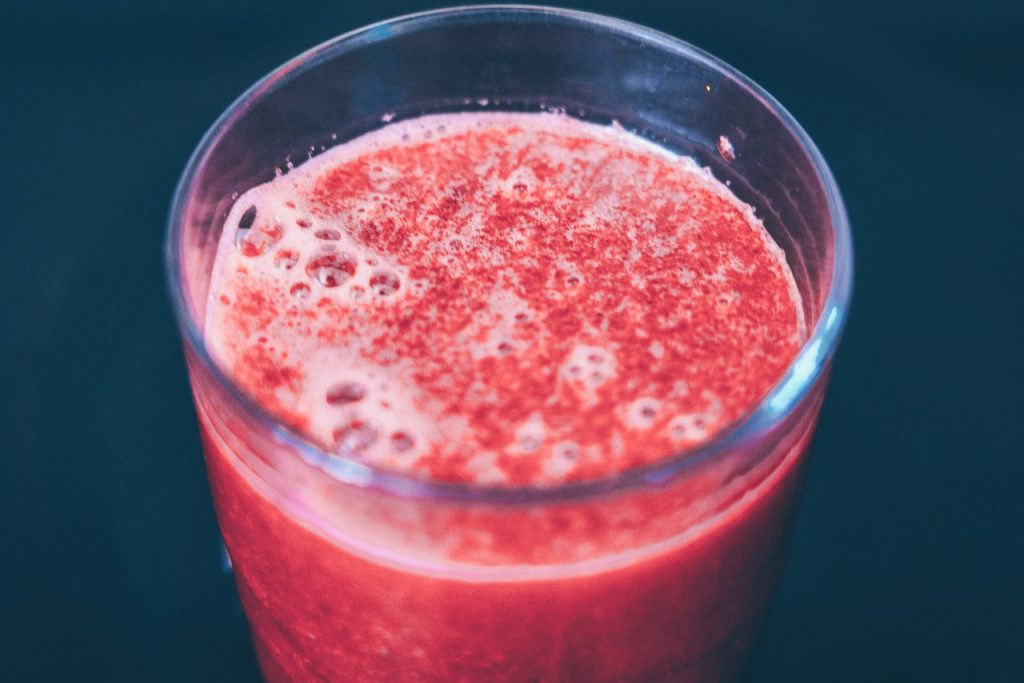If you’re looking to give your body a fresh start, finding the right tools for a complete detox can seem overwhelming. But worry not, because we’ve got you covered! In this article, we’ll explore various natural and effective methods that you can use to detox your entire body. From nourishing foods and herbal supplements to invigorating exercises and therapeutic practices, get ready to discover the perfect holistic approach to rejuvenating your mind, body, and spirit. So, don’t wait any longer, let’s embark on this transformative journey together!

Water
Importance of water for detoxification
Water is an essential component for detoxification. It plays a crucial role in flushing out toxins from your body, keeping your organs functioning optimally, and maintaining overall health. Water helps to eliminate waste products through urination, sweating, and bowel movements. Additionally, water aids in the digestion and absorption of nutrients, which are vital for detoxification processes in your body. Ensuring you drink enough water throughout the day is a simple yet effective way to support your body’s detoxification efforts.
How much water to drink for detoxification
To support detoxification, it is recommended to drink at least 8 glasses of water (64 ounces) per day. However, individual water needs may vary depending on factors such as body weight, activity level, and climatic conditions. It is best to listen to your body’s signals and drink water whenever you feel thirsty. If you engage in intense physical activity or live in a hot environment, you may need to increase your water intake to compensate for the additional fluid loss through sweat. Remember, staying adequately hydrated is key in aiding your body’s detoxification processes.
Fiber-Rich Foods
Role of fiber in detoxification
Fiber is an essential nutrient when it comes to detoxification. It acts like a sponge in your digestive system, absorbing harmful toxins and waste products and promoting their elimination from your body. By adding more fiber to your diet, you can support healthy bowel movements and prevent the buildup of toxins in your colon. Fiber also helps to regulate blood sugar levels, promote satiety, and nourish beneficial gut bacteria, further enhancing the detoxification process.
Examples of fiber-rich foods
Including a variety of fiber-rich foods in your diet is an excellent way to support detoxification. Some examples of fiber-rich foods include:
- Whole grains such as quinoa, brown rice, and oats
- Fruits like apples, berries, and pears
- Vegetables such as broccoli, spinach, and Brussels sprouts
- Legumes like black beans, lentils, and chickpeas
- Nuts and seeds such as chia seeds, flaxseeds, and almonds
Adding these foods to your meals and snacks can provide a healthy dose of fiber, aiding in the detoxification process.
Benefits of including fiber in your diet
Apart from supporting detoxification, including fiber in your diet offers numerous benefits. Fiber helps to regulate cholesterol levels, improve digestion, promote a healthy weight, and reduce the risk of developing chronic diseases such as heart disease and diabetes. Additionally, fiber-rich foods provide essential vitamins, minerals, and antioxidants that further support your overall health and wellbeing.
Green Leafy Vegetables
Why green leafy vegetables are beneficial for detoxification
Green leafy vegetables are powerhouses when it comes to detoxification. They are rich in chlorophyll, a natural compound that helps to rid your body of harmful toxins, heavy metals, and environmental pollutants. Moreover, green leafy vegetables are packed with essential vitamins, minerals, and antioxidants that support liver function, a key organ involved in detoxification processes. Including green leafy vegetables in your diet can help boost your body’s natural detoxification mechanisms and improve overall health.
Specific green leafy vegetables to include in your diet
To reap the benefits of green leafy vegetables for detoxification, consider incorporating the following options into your meals:
- Spinach: This versatile and nutrient-packed green leafy vegetable is rich in iron, vitamins A and C, and folate. It can be easily added to salads, smoothies, or cooked dishes.
- Kale: Known for its exceptional nutritional profile, kale is a great source of vitamins K and C, as well as fiber. Try enjoying kale in salads, sautés, or as crispy kale chips.
- Swiss chard: With its vibrant colors and delicate flavor, Swiss chard is a nutritious addition to any detox-friendly diet. It contains high levels of vitamins A, K, and C, as well as magnesium and potassium. Sauté or steam Swiss chard for a delicious side dish.
- Arugula: This peppery leafy green is not only packed with flavor but also with vitamins A, K, and C. It can be used as a base for salads or added to sandwiches or wraps for a refreshing detox boost.
Including these green leafy vegetables in your diet can provide valuable nutrients and support your body’s detoxification processes.
Herbal Teas
Types of herbal teas that aid in detoxification
Herbal teas have been used for centuries to support detoxification and overall wellness. Some types of herbal teas that can aid in detoxification include:
-
Dandelion Root Tea: Dandelion root is known for its diuretic properties, helping to flush out toxins through increased urine production. It also supports liver function and promotes digestion.
-
Milk Thistle Tea: Milk thistle is a powerful herb that supports liver health, a vital organ for detoxification. Drinking milk thistle tea can aid in flushing out toxins and protecting liver cells.
-
Ginger Tea: Ginger has natural detoxifying properties and can help alleviate digestive discomfort. Ginger tea can stimulate digestion, reduce inflammation, and promote sweating, which can aid in the elimination of toxins.
-
Peppermint Tea: Peppermint tea is not only refreshing but also supports digestion and detoxification. It can ease digestive symptoms such as bloating, gas, and indigestion.
Benefits of drinking herbal teas
Incorporating herbal teas into your routine offers various benefits for detoxification, including:
- Hydration: Herbal teas provide a delicious way to stay hydrated, as they are caffeine-free and often packed with natural flavors.
- Antioxidant Boost: Many herbal teas, such as green tea and rooibos tea, contain powerful antioxidants that protect your cells against oxidative stress and support overall health.
- Liver Support: Certain herbal teas, like dandelion root tea and milk thistle tea, specifically support liver function, enhancing the detoxification process.
- Digestive Aid: Herbal teas, such as ginger tea and peppermint tea, can soothe and support digestion, reducing discomfort and promoting regular bowel movements.
How to incorporate herbal teas into your routine
To incorporate herbal teas into your detoxification routine, try the following tips:
- Replace sugary beverages with herbal teas to stay hydrated and support your body’s detoxification efforts.
- Experiment with different herbal tea flavors and find ones that you enjoy the most.
- Consider adding a slice of lemon or a dash of honey to enhance the taste of your herbal tea.
- Enjoy a cup of herbal tea after meals to support digestion and aid in the elimination of toxins.
By making herbal teas a regular part of your routine, you can support your body’s natural detoxification processes and enjoy the numerous health benefits they offer.

Exercise
How exercise facilitates detoxification
Exercise is not only beneficial for physical fitness but also plays a significant role in facilitating detoxification. When you engage in physical activity, you increase blood flow and circulation throughout your body. This increased blood flow helps to deliver oxygen and nutrients to your organs, including your liver, kidneys, and skin, which are essential for the detoxification process. Moreover, exercise stimulates sweating, which aids in the elimination of toxins through your skin. Regular exercise also supports optimal digestion and bowel movements, further assisting in the detoxification process.
Types of exercises that are effective for detoxification
Incorporating a variety of exercises into your routine can maximize the detoxification benefits. Some effective exercises for detoxification include:
-
Cardiovascular Exercises: Activities such as running, swimming, cycling, or dancing increase your heart rate, improve circulation, and enhance oxygen delivery to organs involved in detoxification.
-
Strength Training: Engaging in strength training exercises, such as weightlifting or using resistance bands, helps build lean muscle mass. Increased muscle mass supports a more efficient metabolism and aids in the elimination of toxins.
-
Yoga: Yoga combines movement with deep breathing and stretching, promoting blood flow, lymphatic drainage, and relaxation. Specific yoga poses, such as twists and inversions, can stimulate detoxification processes in your body.
-
High-Intensity Interval Training (HIIT): HIIT workouts involve short bursts of intense exercise followed by brief recovery periods. These workouts boost metabolism, improve cardiovascular fitness, and support detoxification.
Recommended duration and frequency of exercise
To support detoxification, aim for at least 150 minutes of moderate-intensity aerobic exercise or 75 minutes of vigorous-intensity aerobic exercise per week. This can be further divided into shorter sessions throughout the week. Additionally, incorporating strength training exercises two or more times a week can provide additional detoxification benefits. Remember to listen to your body and consult with a healthcare professional or fitness instructor to determine an exercise plan that suits your individual needs and goals.
Dry Brushing
Explanation of dry brushing as a detoxification technique
Dry brushing is a simple but effective technique used to support detoxification by promoting lymphatic drainage and exfoliation. It involves gently brushing your skin with a natural bristle brush in specific motions, usually starting from your feet and moving upwards towards your heart. Dry brushing helps to stimulate blood flow, remove dead skin cells, and support the lymphatic system in eliminating toxins and waste products from your body.
Benefits of dry brushing
Incorporating dry brushing into your routine offers several benefits for detoxification, including:
- Lymphatic Drainage: Dry brushing stimulates the lymphatic system, aiding in the removal of toxins and waste products from your body.
- Exfoliation: The brushing motion helps to remove dead skin cells, leading to smoother and healthier-looking skin.
- Blood Circulation: Dry brushing promotes blood flow, which enhances the delivery of oxygen and nutrients to your organs involved in detoxification.
- Cellulite Reduction: Some people claim that regular dry brushing can reduce the appearance of cellulite by improving blood circulation and helping to break down fat deposits.
Step-by-step guide on how to dry brush
To incorporate dry brushing into your detoxification routine, follow these simple steps:
- Purchase a natural bristle brush with a long handle to reach all areas of your body comfortably.
- Begin with dry skin before showering or bathing.
- Start brushing at your feet and use long, sweeping motions towards your heart. Brush each area several times to stimulate blood flow.
- Brush in a circular motion on your stomach and armpits.
- Be cautious when brushing more sensitive areas or areas with broken or irritated skin.
- After dry brushing, shower or bathe to remove the loosened dead skin cells and toxins from your body.
- Pat your body dry and apply a natural moisturizer to keep your skin nourished.
Remember to be gentle with your brushing motions and adjust the pressure to avoid discomfort or irritation. Consistency is key, so aim to include dry brushing in your routine a few times per week to maximize its detoxification benefits.

Detoxifying Baths
Introduction to detoxifying baths
Detoxifying baths are a relaxing and rejuvenating way to support your body’s detoxification processes. They involve using specific ingredients in your bathwater to promote the elimination of toxins, reduce stress, and enhance overall wellbeing. Taking regular detox baths can help restore balance and provide a soothing escape from everyday life.
Ingredients for a detox bath
There are various ingredients you can add to your detox bath to enhance its effects. Some popular options include:
-
Epsom Salt: Epsom salt is rich in magnesium sulfate, which can be absorbed through the skin during a bath. This mineral helps to relax muscles, reduce inflammation, and support detoxification.
-
Baking Soda: Adding baking soda to your bathwater can help neutralize acidity in your body, promote skin health, and soothe any skin irritations.
-
Apple Cider Vinegar: Apple cider vinegar contains natural acids that help balance the pH of your skin. It can also assist in removing toxins and impurities from your body.
-
Essential Oils: Certain essential oils, such as lavender, chamomile, and eucalyptus, can enhance relaxation, reduce stress, and provide various other detoxification benefits.
Instructions on how to prepare and take a detox bath
To prepare and take a detox bath, follow these steps:
- Fill your bathtub with warm water, ensuring it’s at a comfortable temperature for you.
- Add the detoxifying ingredients to the water. For Epsom salt, use approximately 1-2 cups per standard-sized bathtub. For baking soda, use about 1/2-1 cup. When using apple cider vinegar, start with 1-2 cups or adjust according to your preference. For essential oils, follow the recommended number of drops specified by the manufacturer.
- Stir the water gently to dissolve the ingredients.
- Light candles, play soothing music, or create a calming ambiance to enhance your relaxation experience.
- Immerse yourself in the bath and soak for at least 20-30 minutes.
- Take slow, deep breaths, allowing the detoxifying ingredients and the peaceful atmosphere to promote relaxation and detoxification.
- After the bath, rinse off any residue on your body with lukewarm water.
- Pat your body dry and moisturize with a natural lotion or oil to lock in moisture.
Taking detoxifying baths regularly, preferably once or twice a week, can provide a calming and detoxifying experience, promoting overall health and wellbeing.
Mindfulness and Meditation
How mindfulness and meditation support detoxification
Mindfulness and meditation are crucial practices that support detoxification by reducing stress and promoting overall mental and emotional wellbeing. Chronic stress can negatively impact your body’s detoxification processes by increasing inflammation and impairing overall health. By incorporating mindfulness and meditation into your daily routine, you can cultivate a sense of calm, reduce stress, and support a more balanced and efficient detoxification process.
Techniques to incorporate mindfulness and meditation into your daily routine
To incorporate mindfulness and meditation into your daily routine for detoxification, try the following techniques:
-
Mindful Breathing: Take a few moments each day to focus on your breath. Sit or lie down comfortably, close your eyes, and take slow, deep breaths. Pay attention to the sensations of each inhalation and exhalation, allowing yourself to be fully present in the moment.
-
Body Scan Meditation: Lie down in a comfortable position and bring your awareness to different parts of your body, starting from your toes and moving up to your head. Notice any sensations, tension, or areas of discomfort. As you scan each body part, imagine releasing any stress or toxins from that area.
-
Guided Meditations: Utilize guided meditation apps or recordings to help you cultivate a state of relaxation and focus. Choose meditations that specifically target stress reduction or promote a sense of detoxification.
-
Mindful Eating: Practice being fully present and aware while eating your meals. Engage your senses by savoring the flavors, textures, and smells of your food. Pay attention to hunger and fullness cues, and make conscious choices to nourish your body with wholesome, detoxifying foods.
By incorporating these mindfulness and meditation practices into your daily routine, you can reduce stress, support detoxification, and enhance your overall sense of wellbeing.

Limiting Exposure to Toxins
Identifying common sources of toxins
Limiting your exposure to toxins is essential for supporting overall detoxification. Some common sources of toxins include:
-
Environmental Pollution: Air pollution, chemicals in household cleaning products, and exposure to pesticides and herbicides can introduce toxins into your body.
-
Processed Foods: Processed foods may contain artificial additives, preservatives, and trans fats, which can burden your body’s detoxification processes.
-
Personal Care Products: Many personal care products, such as shampoo, body wash, and cosmetics, contain chemicals that can be absorbed through your skin and add to your body’s toxic load.
-
Plastics and Food Containers: Certain plastics and food containers may contain harmful chemicals like bisphenol-A (BPA) and phthalates, which can leach into your food and beverages.
Tips for reducing your exposure to toxins
To reduce your exposure to toxins and support detoxification, consider the following tips:
-
Choose Organic Foods: Opt for organic produce whenever possible to decrease your exposure to pesticides and herbicides. Also, focus on consuming whole, unprocessed foods to minimize your intake of artificial additives.
-
Use Natural and Non-Toxic Cleaning Products: Replace conventional cleaning products with natural alternatives. Look for products that are free from harsh chemicals and use plant-based ingredients.
-
Read Labels: Read the labels of personal care products carefully. Avoid products containing ingredients like parabens, phthalates, and synthetic fragrances.
-
Store Food and Beverages in Glass or Stainless Steel: Use glass or stainless steel containers to store your food and beverages, reducing the risk of chemical leaching from plastics.
-
Improve Indoor Air Quality: Open windows for fresh air circulation, use air purifiers, and avoid using chemical-laden air fresheners or synthetic fragrances in your home.
Creating a toxin-free environment
Creating a toxin-free environment is an ongoing process. Some additional steps you can take to create a toxin-free environment include:
- Avoid smoking or exposure to secondhand smoke, as it introduces harmful toxins into your body.
- Maintain good indoor ventilation to minimize indoor air pollutants.
- Test your home for radon, a radioactive gas that can be harmful in high concentrations.
- Filter your tap water or consider using a water filter to remove potential contaminants.
- Check for the presence of mold or mildew in your home and address it promptly.
- Choose natural and non-toxic materials when renovating or redecorating your living space.
By being mindful of potential sources of toxins and taking proactive measures to reduce exposure, you can create a healthier and more detox-friendly environment for yourself and your loved ones.
Quality Sleep
The importance of quality sleep in detoxification
Quality sleep is crucial for supporting your body’s detoxification processes. During sleep, your body undergoes essential restorative functions, including toxin removal and cellular repair. Lack of sleep or poor sleep quality can impair these processes, leading to an accumulation of toxins and potential health issues. Getting sufficient, restful sleep is vital for maintaining overall health, supporting detoxification, and promoting optimal wellbeing.
Tips for improving sleep quality
To improve your sleep quality and support detoxification, consider implementing the following tips:
-
Establish a Consistent Sleep Schedule: Go to bed and wake up at the same time each day, even on weekends. This helps regulate your body’s internal clock and promotes better sleep quality.
-
Create a Sleep-Friendly Environment: Ensure your bedroom is dark, quiet, and at a comfortable temperature. Invest in blackout curtains, earplugs, or white noise machines if needed.
-
Limit Electronic Device Use Before Bed: The blue light emitted by electronic devices can disrupt your sleep patterns. Avoid using screens at least one hour before bed, or consider using blue light-blocking glasses or apps.
-
Practice a Bedtime Routine: Engage in relaxing activities before bed, such as reading, taking a warm bath, or practicing meditation. Establishing a consistent bedtime routine can signal to your body that it’s time to unwind and prepare for sleep.
-
Avoid Stimulants: Limit your intake of caffeine, nicotine, and alcohol, especially close to bedtime. These substances can interfere with your ability to fall asleep or stay asleep.
Creating a sleep-friendly environment
In addition to the tips mentioned above, there are other steps you can take to create a sleep-friendly environment:
- Invest in a comfortable mattress, pillows, and bedding to enhance your sleep quality.
- Ensure adequate ventilation in your bedroom for fresh air circulation during sleep.
- Consider using aromatherapy, such as lavender essential oil, to promote relaxation and sleep.
- Remove distractions from your bedroom, such as electronics or work-related items, to create a calming and sleep-promoting environment.
By prioritizing quality sleep and creating a sleep-friendly environment, you can enhance the detoxification process and optimize your overall health and well-being.
In conclusion, supporting your body’s detoxification processes is essential for maintaining optimal health and well-being. Incorporating these various strategies such as drinking enough water, including fiber-rich foods and green leafy vegetables in your diet, consuming herbal teas, engaging in regular exercise, dry brushing, taking detoxifying baths, practicing mindfulness and meditation, limiting exposure to toxins, and prioritizing quality sleep can help support the detoxification process and enhance your overall health. Remember, these practices are not meant to replace medical advice, and it’s always best to consult with a healthcare professional before making any significant changes to your lifestyle or starting a detoxification regimen. By making these small yet meaningful changes, you can embark on a journey towards a healthier, more vibrant you.






